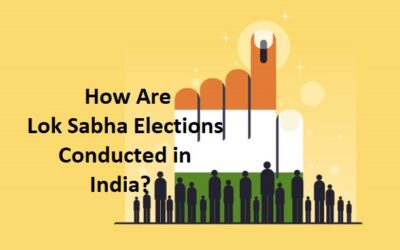NTSE Stage -1 Date, Syllabus, Mark Distribution & Geography Questions
NTSE stage-1 is a highly prestigious exam for the students appearing in class X. These Geography questions will also help students to attempt MCQs in Board exams. With NTSE stage-1, students get a wonderful opportunity to prove their hard work and check their preparations for the upcoming competitive exams. NTSE (National Talent Search Examination) stage – 1 is usually conducted in the month of December / January.
Therefore, fasten your seat belts for the first round of NTSE for students with competitive minds.
MORE ABOUT NTSE STAGE – 1
NTSE is conducted in two stages.
It aims to identify talented students studying in class X and nurture them.
NTSE mainly judges the students in three subjects namely Science, Mathematics, and Social Science.
The following questions will also help the students of class X in their upcoming CBSE Board Examination 2022-23.
NTSE Geography syllabus and chapter-wise marks distribution
TOPIC | QUESTIONS FROM EACH CHAPTER 2 | MARKS | Weightage (in %) |
Forest and Wild Life Resources | 2 | 2 | 20.0 |
Mineral and Energy Resources | 2 | 2 | 20.0 |
Physical Features of India | 2 | 2 | 20.0 |
Drainage | 1 | 1 | 10.0 |
Climate | 1 | 1 | 10.0 |
1 | 1 | 10.0 | |
Water Resources | 1 | 1 | 10.0 |
Total | 10 | 10 | 100.0 |
“NTSE Stage -1 Geography Questions For Class X Students
Forests and Wildlife Resources:
A. Endangered species
B. Aquatic species
C. Endemic species
D. Extinct species.
Q2. Which of the following factors are mainly responsible for “Depletion of Forest and Wildlife.
A. Development during the colonial period.
B. Poaching
C.Mining
D. Leaching
.Q3. Name the chemical compound extracted from the Himalayan Yew for the treatment of cancer?
A. Taxol
B. Opium
C. Quinine
D. Caffeine
Q4. The government of India has implemented the ” Indian Wildlife Protection Act in the year
Q5. Which was the first animal protection initiative taken by “Wildlife conservation in India.”
Q6. The first state to start the Joint Forest Management program successfully was
A. Rajasthan
B. West – Bengal
C. Uttrakhand
D Odissa
Q7. The __________ District of Rajasthan has declared 1200 acres of forest land as the “Bhairodev Dakav Sonchuri”.
A. Alwar
B. Bikaner
C. Pratapgarh
D. Sikar
Forests and Wildlife Resources:
Q8. What was the main cause of depletion of forests in India from 1961 to 1980
A. Urbanisation
B. Agricultural expansion
C. Overpopulation
D Industrialisation
Q9. Species that are only found in some particular areas due to their natural or geographical barriers are termed as
A. Endemic species
B. Rare species
C. Endangered species
D. Vulnerable species.
Q10. Which of the following conservation strategies do not directly involve community participation?
A Chipko Movement
B. Joint forest management
C. Beej Bachao Andolan
D. Demarcation of wildlife sanctuaries.
Q11. Which Indian state has the maximum forest cover?
A. Chattisgarh
B. Jharkhand
C. Madhya Pradesh
D. Assam
Q12. “Chipko Movement” was launched by the women of which Indian state?
A. Uttrakhand
B. Madhya Pradesh
C. Gujarat
D. Mizoram
Q13. How many species of flora are found in India?
A. 15000
B. 47000
C. 81000
D. None of these
Q14. Which type of forests are mostly managed by private communities?
A. Reserved forests
B. Protected forests
C. Unclassed forests
D. None of these.
Q15. ” Van Mahotsav” in India is celebrated between
A. 1st June -7th June
B 1st July-7th July
C.1st Oct -7th Oct.
D. 1st Nov- 7th November
“NTSE Stage -1 Geography Questions For Class X Students
MINERALS AND ENERGY RESOURCES:
Q1. Which mineral gives a sparkling effect to our toothpaste
A. Mica
B. Chloride
C. Fluoride
D. Calcium
Q2. Minerals are mainly found in
A. Soils
B. Rocks
C. Ores
D. Stones
Q3. In ____________ rocks, minerals are generally found in layers.
A. Igneous rocks.
B. Sedimentary rocks
C. Metamorphic rocks
D. None of these
Q4. Which mineral is not found under ocean waters?
A. Bromine
B.Bauxite
C. Magnesium
D. Common salt
Q5. “Rat Hole Mining” is practiced in the state of
A. Manipur
B. Mizoram
C. Sikkim
D. Meghalaya
Q6. Two types of iron ores are
A. Anthracite and Hematite
B. Hematite and Magnetite
C. Magnetite and Lignite
D. Lignite and Anthracite.
Q7. Khetri mines of Rajasthan are the leading producers of
A. Mica
B. Bauxite
C. Copper
D. Manganese
MINERALS AND ENERGY RESOURCES:
Q8. Which mineral is used in electrical and electronic industries due to its dielectric strength, insulating properties, and resistance to high voltage?
A. Copper
B. Aluminium
C. Mica
D. Iron
Q9. Which is the best type of coal
A. Anthracite
B. Bituminous
C. Lignite
D. Peat
Q10. Which type of coal is most popular for commercial use?
A. Anthracite
B. Bituminous
C. Lignite
D. Peat
Q11. Which mineral is found by the decomposition of surface rocks?
A. Bauxite
B. Coal
C. Mica
D. Silver
Q12. Which mineral is found in Kudremukh mines?
A. Coal
B. Gold
C. Iron ore
D. Uranium
Q13. Which industry uses Limestone as its basic raw material?
A. Petro-Chemical industry
B. Textile industry
C. Iron and steel industry
D. Cement industry.
Q14. Manikaran in Himachal-Pradesh and Puga valley in Ladakh is famous for
A. Atomic power energy
B. Solar energy
C. Tidal energy
D. Geo-Thermal energy.
Q15. Which of the following is not a Nonconventional source of energy
A. Petroleum
B. Atomic energy
C. Wind power
D. Bio-gas
“NTSE Stage -1 Geography Questions For Class X Students
PHYSICAL FEATURES OF INDIA
Q1. Which one of the following is the most ancient landmass on the earth’s surface?
A. Himalayan mountains
B. The Northern Plains
C. The Peninsular Plateau
D. The Indian Desert.
Q2. Most of the volcanoes and earthquakes in the world are located at/in
A. Oceans and sea
B. Continents
C. Islands
D. Plate margins
Q3. Which two Indian rivers form an Estuary?
A. Narmada and Mahanadi
B. Narmada and Tapi
C. Narmada and Chambal
D, Godawari and Narmada.
Q4. Which one of the following is not a range of Himalayas?
A. Karakoram
B. Himadri
C. Shiwaliks
D. Himachal
Q5. Which among the following is not a part of the western coastal plains?
A. Konkan coast
B. Malabar coast
C. Coromandal coast
D. Kannad coast
Q6. Which is the highest peak of the Vindhya range?
A. Dhupgarh
B. Amarkantak
C. Mahendragiri
D. Kalumar
Q7. Highest peak of the Arawali range is ___________
A. Guru Shikhar
B. Anai Mudi
C. Nilgiri
D. Nanda Devi
PHYSICAL FEATURES OF INDIA
Q8. Two plates moving away from each other is called
A. Convergence
B. Divergence
C. Transform Boundary
D. Geosyncline
Q9. The uplift of the Himalayas took place in which sea?
A. Arabian sea
B. Tethys sea
C. Caspian sea
D. Yellow sea
Q10. Which continent was not part of Gondwanaland?
A. Australia
B. South America
C. Antarctica
D. North America
Q11. Two types of alluvial soils are
A. Bhabar and Khadar
B. Khadar and Bangar
C. Bhabar and Bangar
D. Khadar and Ghaggar
Q12. A delta is formed at the ________ of a river.
A. origin of a river
B. middle course
C. Mouth
D.Meanders
Q13. The part of the peninsular plateau lying to the North of the ___________river is known as the Central highlands.
A. Narmada
B. Chambal
C. Mahanadi
D. Godawari.
Q14. The Peninsular plateau is composed of _____________rocks.
A. Igneous and Sedimentary
B. Sedimentary and Metamorphic
C. Igneous and Metamorphic
D. None of these.
NTSE Stage -1 Geography Questions For Class X Students
DRAINAGE
1. Which two rivers are the tributaries of Ganga
a) Kosi and Mahanadi
b) Ghagra and Kosi
c) Ghagra and Narmada
d) Kosi and Indus
2. It is predicted that nearly 2 billion people will live in absolute water scarcity in the year
a. 2015
b. 2020
c. 2025
d. 2030
3. Narmada and Tapi rivers flow in
a. Arabian sea
b. Bay of Bengal
c. Mansarovar Lake
d. SambharLake
4. The two headstreams of river Ganga are
a. Alaknanda and Gangotri
b. Gangotri and Gandak
c. Bhagirathi and Dakshin Ganga
d. Alaknanda and Bhagirathi
5. Which one of the following is not a tributary of Ganga from the peninsular uplands?
a. Chambal
b. Son
c. Kosi
d. Betwa
6. Dibang and Lohit are the tributaries of
a. Indus
b. Brahmaputra
c. Chambal
d. Godawari
7. Which of the following rivers do not form delta
a. Mahanadi
b. Godawari
c. Kaveri
d. Tapi
8. Bhimtal, Nainital and Loktak are the names of ___________
a. Fresh water lakes
b. Salt water lakes
c. Tributaries
d. Lagoons
9. Which one of the following is not a salt water lake
a. Chilika
b. Pulicat
c. Dal
d. Sambhar
10. Which one of the following describes the drainage patterns resembling the branches of a tree?
a. Radial
b. Dendritic
c. Trellis
d. Rectangular
11. Ox-Bow lakes are formed by the rivers in its ______ course
a. Upper
b. Middle
c. Lower
d. None of the above.
12. Which one of the following is a riverine island?
a. Majuli
b. Sunderbans
c. Nicobar
d. Lakshadweep
NTSE Stage -1 Geography Questions For Class X Students
CLIMATE
Q.1. Which among the following is an element of weather and climate?
a. atmospheric pressure
b. humidity
c. temperature
d. all of these
Q.2. In which months the transition of the season takes place from the hot rainy to the cold winter season.
a. October-November
b. February-March
c. June-July
d. December- January
Q.3. With which state is “Kaal Baisakhi” associated?
a. West-Bengal
b. Orissa
c. Punjab
d. Kerala
Q4. In which state the houses are built on stilts
a. Punjab
b. Sikkim
c. Assam
d. Jharkhand
Q.5. Sub-Tropical high pressure belt is known as _______________
a. Doldrums.
b. Coriolis force
c. Horse latitudes
d. Terrestrial Radiation
Q.6. Mango showers helps in the ripening of___________
a) Apples
b) Mangoes
c) Grapes
d) Pineapples
Q.7. _____________________is an instrument used to measure the atmospheric pressure.
a. Thermometer
b. Hygrometer
c. Wind-vane
d. Barometer
Q.8. The difference between maximum and minimum temperatures of a day is called____________
a. Insulation
b. Terrestrial Radiation
c. Diurnal range of temperature
d. The annual range of temperature
Q.9. The average air pressure at the sea level is ……………… millibars
a. 1008.25
b. 1013.25
c. 1020.5
d. 1033.5
Q.10. Mawsynram is located in which of the hills?
a) Garo Hills
b) Jainita Hills
c) Khasi Hills
d) Shillong Hills
CLIMATE
Q.11. The term monsoon originates from
a) German
b) Hindi
c) Latin
d) Arabic
Q12. The …………….. clouds are vertical clouds.
a. Cirrus
b. Nimbus
c. Stratus
d. Cumulus
Q.13. …………….. clouds are associated with rainfall, thunder and lightning.
a. Cirrus
b. Nimbus
c. Stratus
d. Cumulus
Q.14. The winds that blow from the sea contain________________ moisture.
a. Low moisture
b. High moisture
c. Moderate moisture
d. No moisture
Q.15. The major components of air are nitrogen and ________________
a. oxygen
b. hydrogen
c. helium
d. neon
Q.16. The ocean currents are one of the reasons for the origin and occurrence of
a. Hot deserts
b. cold deserts
c. plains
d. mountains.
Q17. The atmosphere of the Earth is surrounded by ___________-
a. dust
b. gases
c. water
d. forests
Q18. Equable climate is also known as ______________
a. continental type of climate
b. Maritime climate
c. Mediterranean type of climate
d. Humid climate.
Q19. Cotton like clouds are_______________
a. Cirrus
b. Nimbus
c. Stratus
d. Cumulus
Q20. Chinook blows in_____________
a. Australia.
b. Coastal regions of South America.
c. the U.S.A.
d. the United Kingdom
CLIMATE
Q.21. Which one of the following warm ocean currents replaces the Peruvian cold currents?
a) Kuroshio
b) El Nino
c) South Pacific Currents
d) Gulf Stream
Q.22. Which is the coldest place in India?
a) Dras
b) Srinagar
c) Shimla
d) Jaipur
Q.23. Which of the following states suffer from loo?
a) Tamil Nadu
b) Uttar Pradesh
c) Gujarat
d) None of these
Q.24. What is the full form of ITCZ
a) International Tropical Convergence Zone
b) Interstate Tropical Convergence Zone
c) International Tropical Convergent Zone
d) Inter-Tropical Convergence Zone
Q.25. The amount of ______________________ present in the atmosphere is called Humidity
a) Smog
b) Dust
c) Pollution
d) Water Vapour
CLIMATE
Q.26 _________________type of rainfall is also called 4’O clock rainfall.
a. Monsoon
b. Orographic
c. Cyclonic
d. Convectional
Q.27. Which of the following forces is responsible for the deflection of winds from its normal path?
a) Centripetal Force
b) Coriolis Force
c) Applied Force
d) Gravitational Force
Q.28. During El Nino period, the temperature rises rapidly once in three to eight years along the coast of_____________
a. Peru and Equador
b. India and Pakistan
c. France and Spain
d. Japan and China
Q.29. Which one of the following causes rainfall during winters in the north-western part of India?
a) Cyclonic depression
b) Western disturbances
c) Retreating monsoon
d) Southwest monsoon
Q.30. In ______________ Layer, the sun’s rays are ionized.
a. Troposphere
b. Stratosphere
c. Ionosphere
d. Exosphere.
Q.31. Which of the following areas is not an area of low precipitation?
a) Western parts of Gujarat
b) Leh in Jammu & Kashmir
c) Deccan Plateau
d) Assam
Q.32. Fast flowing and narrow air currents which blows in the upper layer of the atmosphere are called________________
a) Monsoon
b) Cyclone
c) Jet Streams
d) Anticyclone
ANSWER KEY:
1 d. all of these 2. a. October-November 3. a. West-Bengal 4. c. Assam 5. c. Horse latitudes 6. b) Mangoes
7. d. Barometer 8. c. Diurnal range of temperature 9. b. 1013.25 10. c) Khasi Hills 11. d) Arabic 12. d. Cumulus
13. d. Cumulus 14. b. High moisture 15. a. oxygen 16. a. Hot deserts 17. b. gases 18. b. Maritime climate
19. d. Cumulus 20. c. U.S.A. 21. b) El Nino 22. a) Dras 23. b) Uttar Pradesh 24. d) Inter-Tropical Convergence Zone
25. d) Water Vapour 26. d. Convectional 27. b) Coriolis Force 28. a. Peru and Ecuador 29. b) Western disturbances
30. c. Ionosphere 31. d) Assam 32. c) Jet Streams
NTSE Stage -1 Geography Questions For Class X Students
WATER RESOURCES
Q1. India receives ________ percent of the total precipitation.
A. 1
B. 2
C. 3
D. 4
Q2. What is the rank of India in the world in terms of water availability per person per annum?
A. 113
B. 123
C. 133
D. 143
Q3. Who proclaimed dams as ” temples of modern India”?
A. Pt. Jawahar Lal Nehru
B. Mahatma Gandhi
C. Baba Amte
D. Sardar Patel
Q4. Which purpose is not fulfilled by dams?
A. Recharging of underground water
B. Fish breeding
C. Generation of Thermal Power
D. Promotion of tourism
Q5. Dams are considered a threat to the environment due to
A. Adverse effect on Aquatic life
B. Failure to control floods
C. Excessive sedimentation
D. All of these.
Q6. Bhakra dam is situated in which Indian states
A. Himachal Pradesh and Punjab
B. Punjab and Haryana
C. Haryana and Uttrakhand
D. Uttrakhand and Punjab
Q6. Which river is known as the “sorrow of Bengal”.
A. Hugli
B. Son
C. Damodar
D. Gandak
Q7. Mettur dam is located on which river?
A. Krishna
B. Kaveri
C. Godawari
D. Tungabhadra.
Q8. Which is the largest man-made lake in India?
A. Govind sagar
B. Sambhar
C. Chilika
D. Pulicat
Q9. Cherrapunji faces water scarcity due to
A. Water pollution
B. Surface run-off
C. Low rainfall
D. High rate of evaporation
Q10. Khadins and Johads are the traditional water harvesting system of which state?
A. Gujarat
B. Rajasthan
C. Tamilnadu
D. Maharashtra
WATER RESOURCES
Q11. What percentage of energy requirement is fulfilled by hydroelectricity in India?
A. 4
B. 17
C. 22
D. 30
Q12. Which artificial lake was built in the 11th century in Madhya Pradesh?
A. Chambal lake
B. Moti lake
c. Bhojtal Lake
D. Shahpura lake
Q13. Based on the structure and materials used, dams are classified as
A. Timber dams and Masonry dams
B. Masonry dams and Large dams
C. Large dams and medium height dams
D. Timber dams and High dams.
Q14. “Guls’ and “Kuls” are
A. Tributaries
B. Distributaries
C. Diversion channels
D. Reservoirs.
Q15. A 200-year-old system of utilizing stream and spring water in Meghalaya?
A. Tankas
B. Johads
C. Bamboo drip irrigation
D. Guls and Kuls.
Q16. ” Dam” is often referred to as a
A. Barrier
B. Diversion channel
C. Delta
D. Estuary
Q17. Tehri dam is constructed over which river?
A. Yamuna
B. Chambal
C. Tungbhadra
D. Bhagirathi.
Q18. A village in Karnataka has installed about 200 rooftop rainwater harvesting systems.
A. Sringaverapura
B. Tilayya
C. Mettur
D. Gendathur
Q19. In the flood plains of Bengal, people developed ___________to irrigate their fields.
A. Wells
B. Tanks
C. Inundation channels
D. Dams.
Q20. A reservoir was built by Illtutmish in the 14th century.
A. Hauz Khas
B. Al. Hind
C. Daria
D. Taimur sagar.





0 Comments